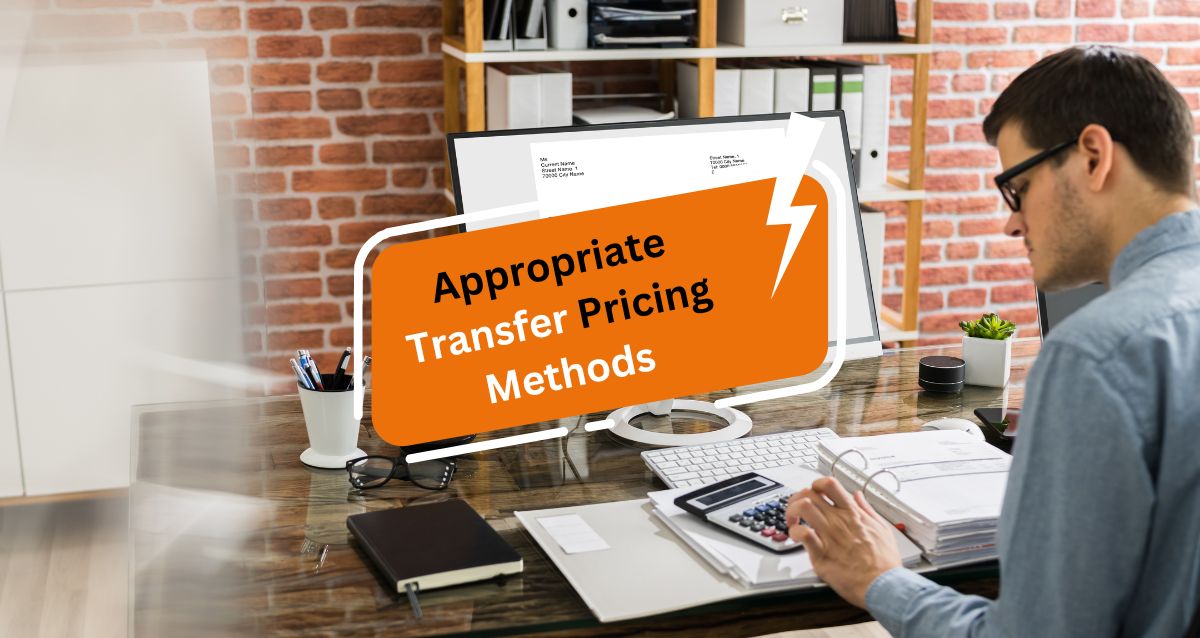Best Transfer Pricing Methods
Under UAE CT law, Transfer Pricing methods are a significant area that deals with the cost of different transactions between connected or related parties. With the rise in international trade and cross-border commercial dealings, it is critical to comprehend transfer pricing regulations. Every company should understand the fundamental guidelines and requirements of transfer pricing. Here, you will get information on choosing the best transfer price strategy. So, do read till the end!

What is Transfer Pricing?
Transfer pricing is the procedure of setting the price for goods and services sold between connected companies within the same corporate group. For example, the price determined for the transactions is called the transfer price when a subsidiary firm offers products or services to its parent company or another subsidiary within the same group.
Businesses rely on transfer pricing to ensure that transaction pricing between related parties is equivalent to fair market value. As part of this procedure, the governing body in this transaction must select a pricing strategy that provides the most accurate estimate of this fair market value. The transfer pricing rules by the Organization for Economic Cooperation and Development (OECD) carry out this procedure.
Selecting a transfer pricing strategy is a top-down tactical choice that gains from the application of instruments and resources intended to assist companies in determining which approaches are most beneficial and suitable for their transfer pricing plan. Additionally, they are employed before the negotiation of fresh advance pricing agreements (APAs). Here are a few transfer pricing strategies that these companies may want to think about, along with some extra data to help with the calculations that back up this approach.
The Value of transfer pricing strategies
Determining whether or not the controlled transactions are carried out at arm’s length is the primary goal of applying transfer pricing techniques. The transfer pricing techniques offer guidance and support to tax authorities and multinational enterprises (MNEs) in determining the pricing of controlled transactions. There are five different transfer pricing techniques available in total. These techniques are:
- Comparable Uncontrolled Cost Approach
- Method of resale prices
- Cost-Plus Approach
- Profit Splitting Technique: Transactional Net Margin Method
How to Select Appropriate Transfer Pricing Methods?

1. Legal prerequisites
First, the legal requirements of the nations in which the group conducts business should be taken into account. Transfer price regulations and standards vary throughout nations, and some might call for particular procedures or paperwork. For instance, the OECD Transfer Pricing Guidelines offer a collection of globally recognized guidelines and practices for transfer pricing. However, other nations can have additional or distinct regulations. To make sure you abide by the pertinent rules and prevent fines or disputes, you should speak with local tax authorities and specialists.
2. Adaptability and flexibility
The transfer pricing method’s adaptability and flexibility constitute the sixth important consideration. Changes in the group’s and the connected entities’ internal and external environments should be accommodated by the transfer pricing approach. For instance, you might need to modify the transfer pricing approach in response to shifts in the supply, demand, or prices in the market, as well as adjustments to tax laws, currency rates, or inflation. To make sure the transfer pricing technique is still applicable, acceptable, and legal, you should also examine and update it regularly.
3. Analysis of functions
The functional analysis of the associated entities engaged in the transaction is the second thing to take into account. The activities carried out, resources utilized, and risks taken by each party in connection with the transaction are all methodically examined in the functional analysis.
Determining each entity’s economic contribution and value drivers is helpful. You can choose the transfer pricing strategy that most closely adheres to the arm’s length principle—the benchmark for figuring out the transaction’s fair market value—based on the functional analysis. According to the arm’s length concept, the transfer price must match the amount that independent parties would agree upon in a similar situation.
4. The assets that were given or used
You have to identify tangible and intangible assets by the functional analysis. Physical assets, like real estate, machinery, and equipment, require financing. Depending on their intended use and degree of risk, investments in these capital assets are typically anticipated to yield for the long term. Since using intangible assets can result in a significant competitive advantage, intangible assets are particularly important. Certain intangibles—like patents, trademarks, and trade names—are protected by the law, but other intangibles could be just as significant and worthwhile even if they are not as protected.
5. Ease and regularity
The transfer pricing method’s consistency and ease of use constitute the fourth important consideration. Your ideal approach should reduce the complexity and unpredictability of the transfer pricing process while being simple to comprehend, implement, and oversee. Unless there are good reasons to modify the technique, you should also strive for consistency when using the same or comparable procedures across several transactions, entities, or periods. It can lessen the workload for administrative staff, prevent misunderstandings, and improve the legitimacy of your transfer pricing strategy.
Best transfer pricing methods for startups
Traditional transaction methods are always better if your study shows they are equally acceptable for use. It also applies to transactional profit methods. Conventional transaction techniques are the most straightforward means of determining whether the terms of controlled transactions are fair and reasonable.
In a similar way, if you have to choose between two methods (both equally appropriate), go with the CUP method. If you can locate trustworthy comparables, the OECD refers to it as “the most direct and reliable way to apply the arm’s length principle.”
How can Flyingcolour Tax and Consultant help you?
Flyingcolour Tax and Consultant is aware of international companies’ challenges while choosing the best transfer pricing strategies. The company provides customized solutions to guarantee compliance with transfer pricing requirements while maximizing tax efficiency for your company. It is particularly due to the skilled team of tax advisors and consultants working for the agency. The experts will tell you the transfer pricing method advantages and help you choose what suits your business the best.
To learn more about How to Select Appropriate Transfer Pricing Methods?, book a free consultation with one of the Flyingcolour team advisors.
Disclaimer: The information provided in this blog is based on our understanding of current tax laws and regulations. It is intended for general informational purposes only and does not constitute professional tax advice, consultation, or representation. The author and publisher are not responsible for any errors or omissions, or for any actions taken based on the information contained in this blog.
